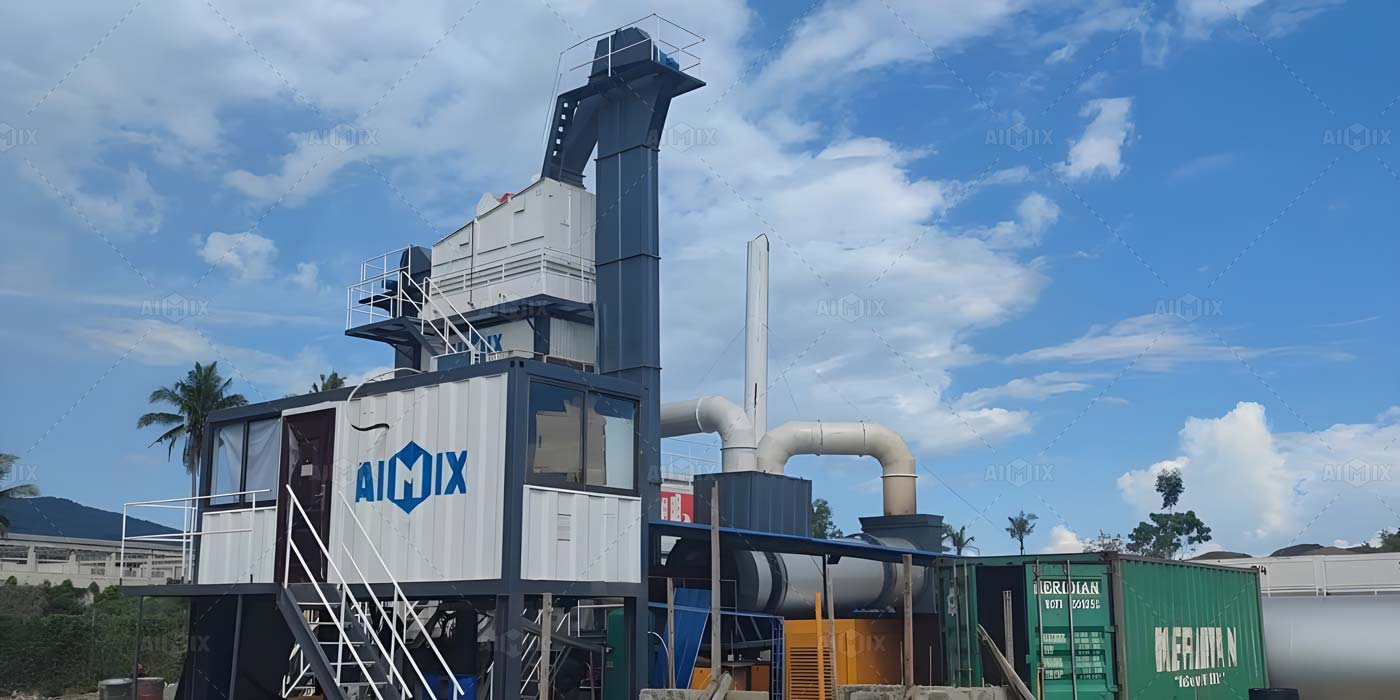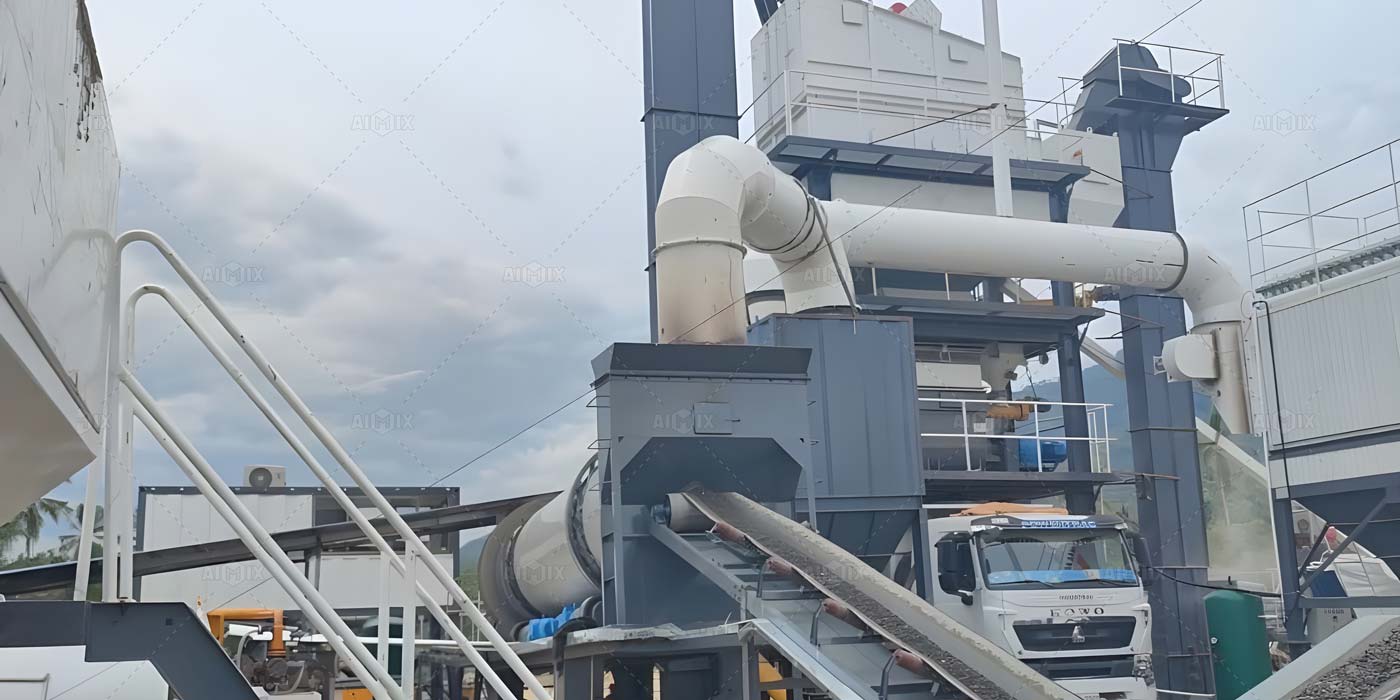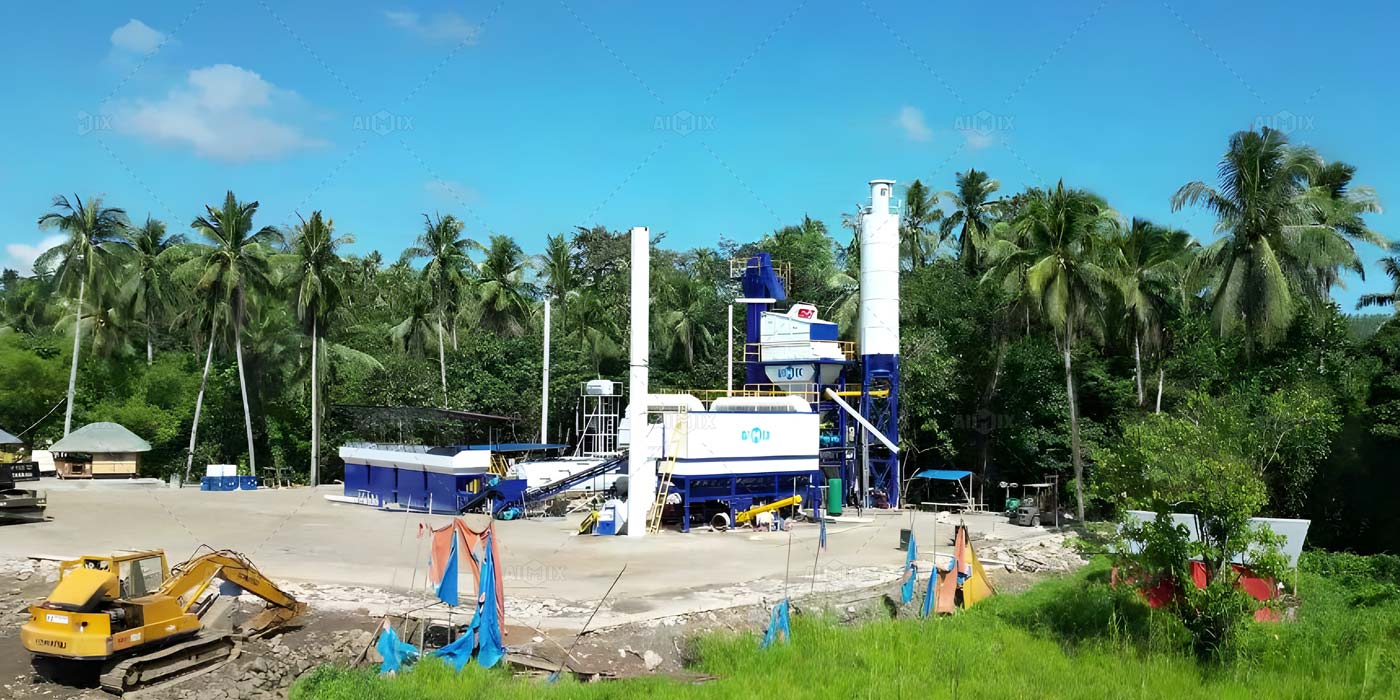When planning a road construction project, one of the most important questions is how to select the right asphalt plant size to meet your daily paving target. If your project requires 500 tons of asphalt mix per day, choosing the right capacity is key to keeping operations smooth, minimizing waste, and ensuring consistent asphalt quality. In this article, I’ll walk you through how to calculate the right asphalt mixing plant capacity for this scale, what factors affect your choice, and how to make the best investment for both efficiency and long-term value.

Understanding Daily Asphalt Demand and Production Hours
Let’s start with the basics. A daily paving demand of 500 tons doesn’t mean your asphalt plant must produce 500 tons in one go. You need to consider how many hours per day your plant will run. For example, if you plan to operate 10 hours per day, your required production rate would be:
Basic Calculation Formula
Required production rate = Total daily demand ÷ Operating hours
In this case: 500 tons ÷ 10 hours = 50 tons per hour (TPH).
This means you need an asphalt mixing plant that can produce at least 50 TPH to meet your paving plan efficiently. However, that’s only the starting point. Real-world conditions often require a margin for flexibility and downtime.

Why You Should Always Add a Capacity Buffer
Even with a clear daily target, production rarely runs at 100% efficiency. There are inevitable pauses—such as truck loading, temperature control adjustments, or maintenance checks. To ensure you always meet your 500-ton target, it’s wise to choose a plant with around 20–30% higher capacity.
So instead of a 50 TPH mini asphalt mixing plant, it’s safer to select a plant around 60–65 TPH. This buffer keeps your operation stable even when unforeseen issues occur, preventing paving delays and asphalt temperature losses during transport.
Considering Asphalt Type and Mix Design
Before finalizing your plant size, you also need to think about the mix type. Different asphalt mixtures—such as dense-graded, stone mastic, or polymer-modified—require different mixing times and heating levels. For instance, polymer-modified asphalt takes longer to mix and requires higher temperatures, reducing the overall hourly output.
In such cases, a plant rated at 60 TPH may effectively produce around 50 TPH when handling complex mixes. That’s why choosing a slightly larger model helps maintain steady supply even with more demanding materials.

Mobile vs. Stationary Asphalt Plants: Which Fits Your Target Better?
Once you know your required capacity, the next question is the type of plant. For projects spread across different road sections or remote areas, a mobile asphalt plant might be ideal. It offers easy relocation and quick setup, perfect for short- to medium-term projects that still need 500 tons per day.
In contrast, if your work is concentrated in one place for several months or years, a stationary asphalt mixing plant may be a better choice. It ensures higher stability, long service life, and can handle higher production volumes if your demand increases later.
Therefore, think about your project type, expected duration, and future project plans before making a final choice. Flexibility, cost, and long-term use should all influence your decision.
Fuel Type and Operating Efficiency Matter Too
Another important consideration is the fuel used for drying and heating—diesel, heavy oil, natural gas, or coal. Fuel efficiency directly affects your cost per ton of asphalt. Modern burners and automatic temperature controls can reduce fuel consumption significantly while maintaining mix quality.
Moreover, energy-efficient systems help reduce emissions and comply with environmental standards, which are becoming increasingly important in both public and private projects worldwide.

Example: Choosing the Right Model for 500 Tons Daily Output
To make things more practical, let’s consider a project producing 500 tons of asphalt per day over a 10-hour working period. Here are three possible plant configurations to match this requirement:
- 60 TPH mobile asphalt drum mix plant: Compact design, quick setup, suitable for small road construction or rural paving projects.
- 80 TPH batch mix plant: Suitable for city roads or bridge surfacing with strict mix quality requirements.
- 100 TPH stationary drum mix plant: Ideal for contractors supplying asphalt to multiple clients or larger-scale projects.
Each configuration can handle the 500-ton daily target, but your final choice depends on the mix type, working hours, and project mobility.
Final Thoughts: Balance Capacity, Flexibility, and Long-Term Value
Calculating the right asphalt plant size is more than a simple math exercise. It’s about balancing daily demand, production efficiency, and future expansion potential. A plant that is too small can cause project delays, while one that’s too large may lead to higher initial costs and underutilization.
From my experience, the best approach is to start with your daily demand, evaluate realistic working hours, and then select a plant with about 20–30% extra capacity. This strategy ensures stable production and better return on investment over time.

Looking for a Reliable Asphalt Plant Solution?
If you’re planning a project with a 500-ton daily demand and need help calculating the right asphalt plant size, I can help you design a customized solution. Whether you need a mobile or stationary setup, I provide full support—from model selection and layout design to on-site installation and operator training. Reach out today to discuss your project needs and get a tailored plan that fits your production goals perfectly.